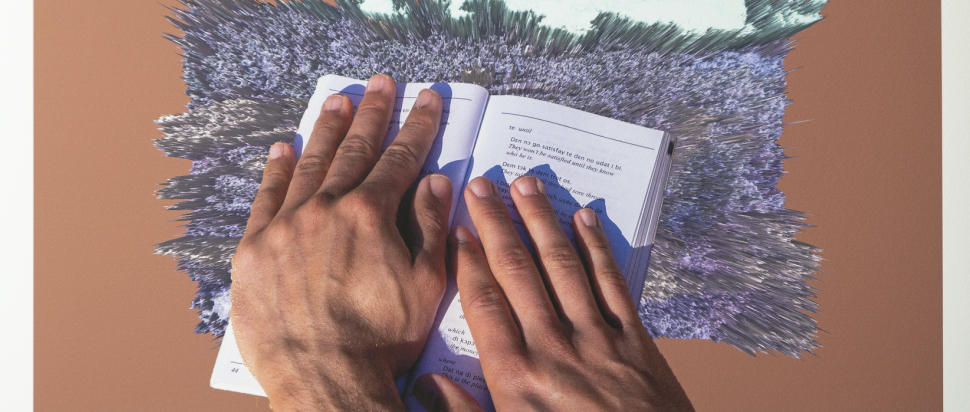Edinburgh Art Festival: Platform 2021 preview
Platform is always one of the most exciting parts of Edinburgh Art Festival, offering up four emerging artists' practices with lightly curated themes between them, with this year's looking at care and support structures
Each year, Edinburgh Art Festival saves a spot for some of the most exciting emerging practices in Scotland right now, in the Platform exhibition. This year’s no exception and the 2021 edition brings together four artists working with ideas of history, literature, trauma, identity, debt and using the tools of sculpture, artist film, drawing and installation to do so.
For artist Isabella Widger, the Platform exhibition meant being able to delve deeper into a novella by the 'Dickens of France' Gustave Flaubert, called A Simple Heart. “It was written in 1877 and spans a chunk of the middle of the 19th century. It follows the housemaid Felicité and is almost divided in three between her young years, middle age, then later her death. Throughout, she suffers losses and betrayals and slowly becomes more and more isolated, losing her eyesight. She’s given a parrot at some point and her attachment to it is really strong, it replaces all the lost relationships she had, with a romantic and maternal element... It’s an idealisation of simplicity and purity… critiquing it as well as simulating it.”
This forms the context and basis for Widger’s installations of drawings and sculptures. One of these includes an imagined portrait of Felicité with her bird, and is loosely a self-portrait by the artist, too. A large photograph is also pasted across a freestanding wall, and shows an image of a small set of Felicité’s room blown-up to full scale. Speaking of the imagination involved in creating these versions of what is described in the book, Widger says they aren't scenes that are necessarily described: “At some point you have to realise, you can say something [back to these reference materials]. The not-saying is too reifying.”
Continuing ideas of care and maintenance work, Kirsty Russell’s new textile artworks extend in part from time spent in the archive of Glasgow Women’s Library, specifically looking at “the sewing papers… The shapes of the work are informed by the parts of garments like the gussets and yokes, bits of the shoulder that hold the other parts of the pattern.” These elements struck Russell as relevant to the broader themes in her practice. “All the women in my family are in care settings, so I’m always thinking of that and the weight of that work you often don’t really see, the repetitive nature of maintenance work.” Translating to the works Russell is showing, she says, “I like that they could be used, I want to make a rug that people will sit on. I like the idea of people having that relationship with them.”
Artist Jessica Higgins continues the theme of support work, setting an imaginative story in the ear infection of a debt advisor. This affliction causes the protagonist Denise’s hearing to become distorted by an echo. For Higgins, the echo comes with broad associations, ranging from Greek mythology to the listening and mirroring of active listening that forms part of advisory work.
So it is that in the video a series of performers act as the Ear, “who repeats a lot of phrases and lines throughout," explains Higgins. "Then there’s the compère, the narrator, host and colleague, who co-composes Denise as the character, and Meanwhile who is a time-based figure, played by a dancer who made choreographic scores based on the original version of the script. The Ear then mirrors these through the film. Then there’s the chorus who are meant to be the voices on the film, sometimes as part of the dialogue of the film, then other times in the theatrical tradition of summarising and reflecting.” Summing up the film-performance, Higgins describes all the research, forms and ideas as “pickling around this weird thing.”
Also working with experimental forms of filmmaking, Danny Pagarani’s Platform work takes a philosophical angle towards identity formation. In the process of forming the work, Pagarani says, “I was engaged in a certain kind of self-fetishisation. Instead of fleeing that or pretending it’s not happening I went more for it.” Images of the artist’s own arms pressing into one another are included alongside the grinding together of two ceramic phallus forms the length of Pagarani’s forearm, as they loudly make a metallic ceramic sound. These form the setting too for footage of Pagarani’s father reading the Krio words for “hurt, heart and place”, homophones of one another.
Thinking of the ways these words differ but reach out to one another in a way, Pagarani suggests a notion of a less rigid or prescribed identity formation that can include difference, where identities seemingly distinct from one another can find aspects of themselves in one another. As an example, Pagarani mentions “English is a creole language, with Italian, French, Greek, African and Hindi words… To be blunt about it, it’s our only political hope if we can hold that contradiction within us, what I am is also what I’m not.”
Platform: 2021, Institut français d'Ecosse, until 29 Aug, open daily 10am-5pm, free
edinburghartfestival.com/event/platform-2021/
